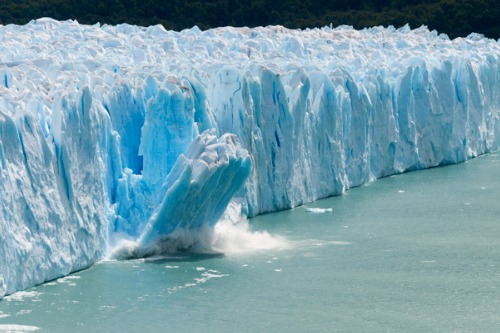Introducing the FloodFlash Climate Change series

Authored by FloodFlash
While the climate changing is not new, the recent steep rises in temperature and extreme weather events are a cause for concern. Widespread flooding in Pakistan and Florida, the 40°C highs in the UK, and forest fires across Europe were all made more likely by man-made climate change. This article marks the start of our climate series, where we will explore climate change, some of the implications for insurance, and the broader picture.
What is climate change?
According to the UN, climate change refers to ‘long-term shifts in temperatures and weather patterns.’ Such shifts have occurred throughout time, predominantly due to changes in the sun’s intensity, variations in the Earth’s orbit, and levels of carbon dioxide in the Earth’s atmosphere. The graph below shows the Earth’s average temperature over the last 500 million years. While temperature is not the only component of climate change, it is a useful metric for looking at long-term changes in the climate and possible weather patterns. Scientists use clues in the natural environment records to estimate temperatures, with ice cores, tree rings, and fossils all used.
What is the greenhouse effect?
One of the causes of a changing climate is changes in the levels of carbon dioxide. Carbon dioxide is a greenhouse gas. That means it acts like a blanket around the Earth, trapping in the sun’s heat and causing temperatures to rise. This is the greenhouse effect. Carbon dioxide isn’t the only greenhouse gas. Water vapour, methane, nitrous oxide and ozone are also greenhouse gases. All of these exist naturally in the atmosphere. In fact, the greenhouse effect makes the temperature on Earth perfect for life to flourish. Without the greenhouse gases, Earth would be around 30°C cooler.
Since 1880, average global temperatures have increased by about 1°C. According to the Intergovernmental Panel on Climate Change (IPCC), human activities are responsible for most of that warming. In fact, over the last several decades, natural climate change would have led to a slight cooling. The IPCC also predict that temperatures will continue to rise. How much they rise by will be dependent on how much we curb emissions and change our lifestyles, but current predictions are around 1.5-4.5°C of warming by 2100.
What is global warming?
Global warming is the increase in the average temperature of the Earth’s surface. It is important to be aware that global warming and climate change are not the same. Global warming refers only to the Earth’s rising temperature. Climate change includes man-made and natural changes to temperature (both warming and cooling) AND weather patterns. Put simply, the increased pace of global warming is a symptom of the man-made climate change we are currently experiencing.
A few degrees of warming does not seem a lot, especially when compared to the temperatures and fluctuations of the last 500 million years. The main difference is, of course, us. We are producing the emissions that cause rising temperatures, changing the natural cycles and patterns of the Earth, and altering the Earth’s surface significantly. Cities create impermeable surfaces that absorb heat, agriculture and new buildings destroy habitats, and humans live in places that were once uninhabited. Not only is climate change a threat to the planet and the natural environment, it will likely have devastating effects on the world’s population.
Why is climate change relevant to insurance?
Man-made climate change is already impacting the insurance industry. The number of extreme climate-related events and the number of people at risk from such events is rising rapidly. This means insurers are paying out to more people, more often. Weather patterns are also becoming more intense, resulting in larger payouts when events occur. As well as increasing the likelihood and severity of these events, climate change adds an additional layer of complexity. We haven’t experienced the frequency and severity of extreme weather before, making it difficult to model based on historical data. It is also hard to model the exact impact climate change will have on extreme weather events. It is therefore difficult for insurers to establish premiums that are both fair and economically viable.
Insurance protects people against the impacts of natural disasters, but man-made climate change makes it increasingly hard to model these impacts accurately.
Henry Bellwood, Catastrophe Risk Analyst, FloodFlash, “The insurance industry’s ability to model such events should surely be questioned. It’s unlikely that we are quantifying the risk to society accurately nor that we are preparing sufficiently.”
The insurance industry needs to continue to adapt in order to survive and continue to serve its purpose. New partnerships, new products, and new methods will be key.





